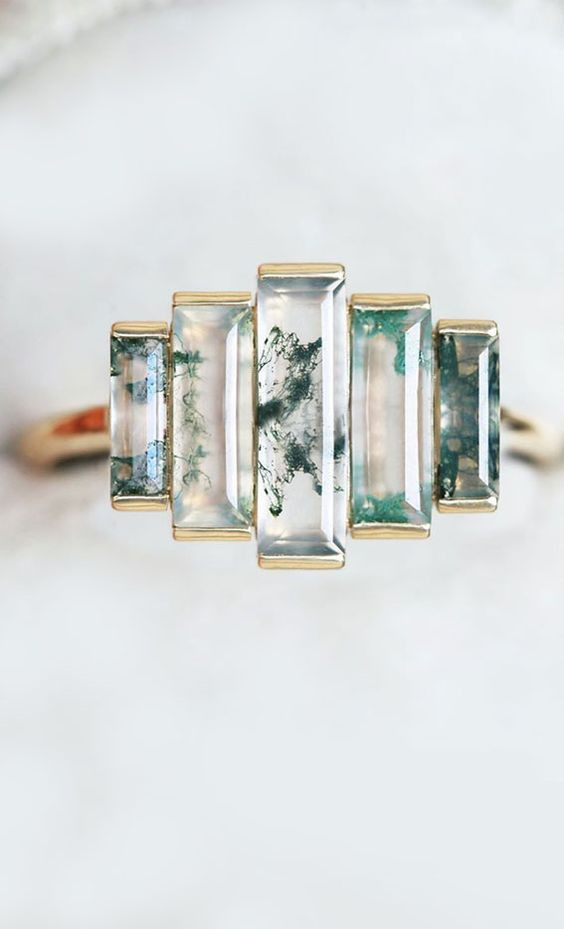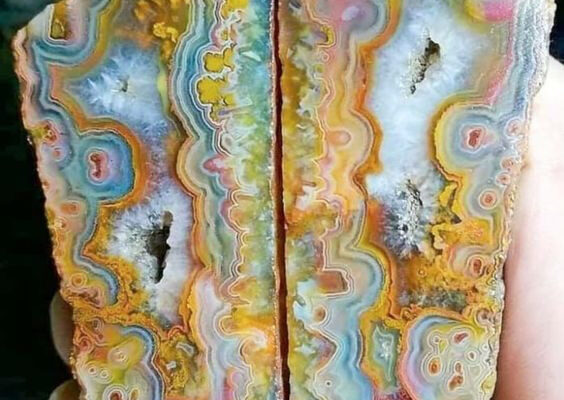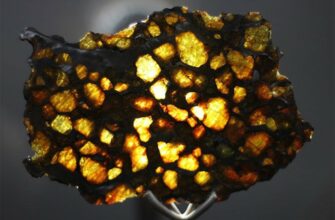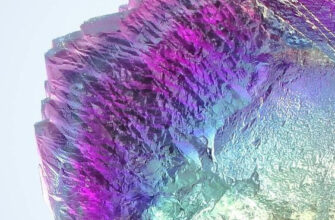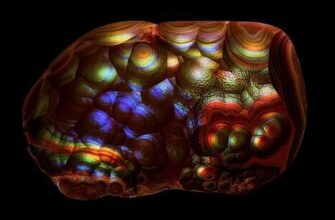What is agate? One could say that it is "striped chalcedony", but there is moss agate or landscape agate - without any stripes.
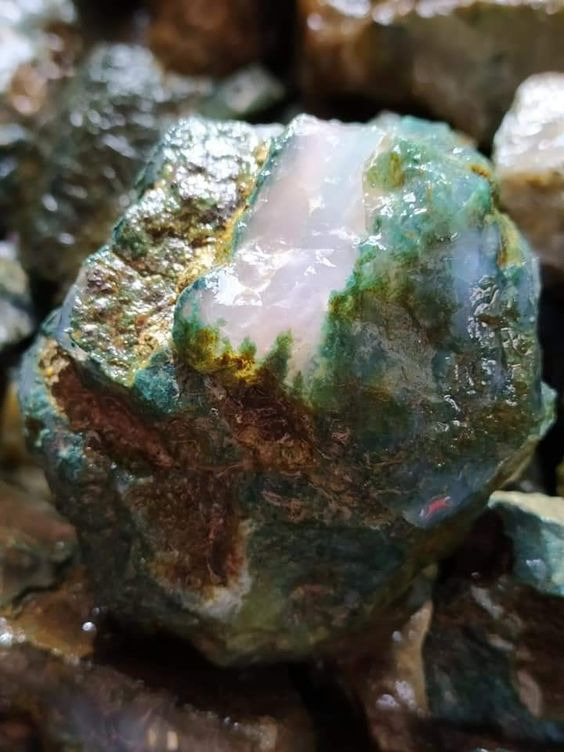
The line between agate and various types of chalcedony is illusory.
Chalcedony is called agate if it exhibits one of the following properties:
- stripes of different colors, different layer structures, or both at the same time
- transparency combined with multicolor
- translucent texture is combined with color inclusions of nodular shape
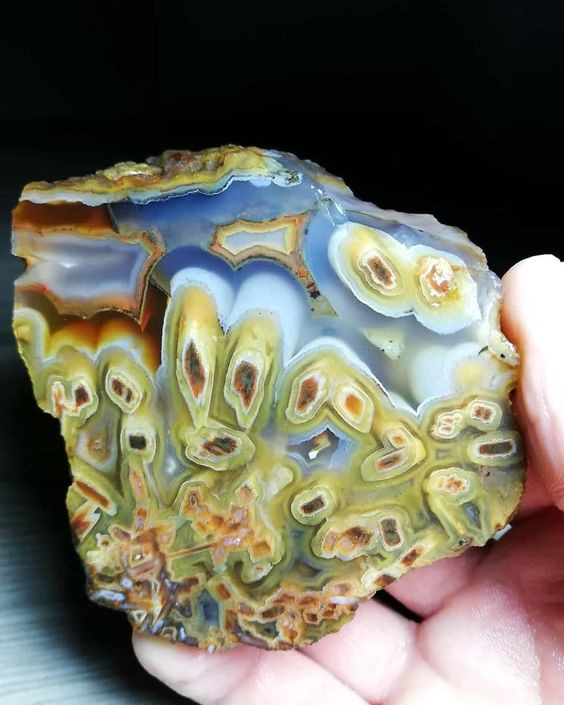
But compliance with these definitions still does not give a full guarantee in determining the sample as an agate. Appearance can be deceiving. To truly identify agates, you need to use a microscope.

Strictly speaking, agate is not a mineral. It does not have a homogeneous structure like a crystal, and usually does not even consist of one type of mineral. Agate is more like a rock, consisting of various components in various proportions.
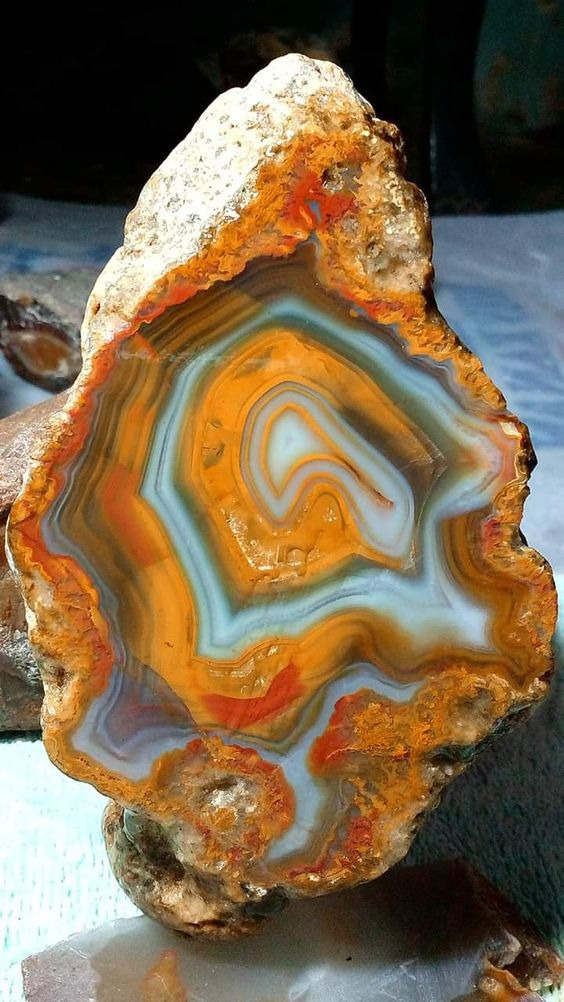
Agate can be any color, with the most common colors being (in descending order) grey, white, brown, salmon, red, orange, black and yellow.
There may be shades of purple or grayish blue, deep greens and blues are very unusual.

The color is due to various intercalated minerals, of which iron oxides and hydroxides are the most common, giving yellow, brown and red colors.
"Pure" agate is white, gray or blue-gray.

Stripes and patterns are the most characteristic visible property of agates.
Agate is formed during secondary processes in volcanic rocks, long after they have solidified, and at relatively low temperatures. It fills the cavities in the rock. The shape of agate concretions also depends on the composition and structure of the volcanic rock.
Mineral formation
Agates can be found in sedimentary rocks. Agate is sometimes found as "vein" agate in and around low-temperature hydrothermal veins, such as some ore deposits.
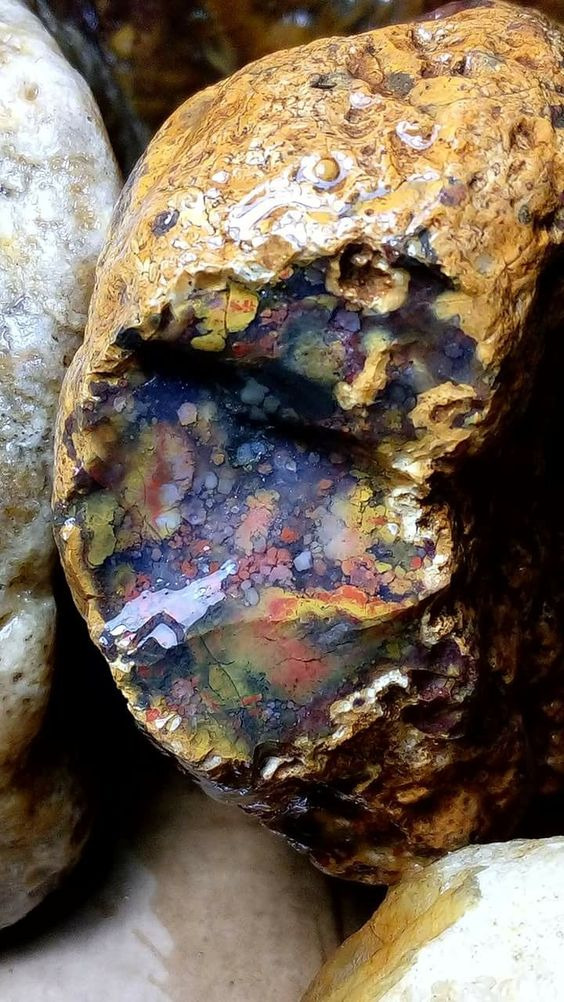
If a tree is under volcanic ash during eruptions, then the woody substance is often completely replaced by silica or opal, small voids in the wood structure and cracks are sometimes filled with agate.
Varieties of agate
The names of the varieties of agate are chosen more or less arbitrarily according to their appearance. Not surprisingly, there are countless "varieties" of agate, by some accounts as many as 122 different varieties. Several terms are widely used and people agree on their meaning.

Some names have very little to do with the properties of the agate itself, but with how they have been processed (eye agate or "owl's eye" for example).
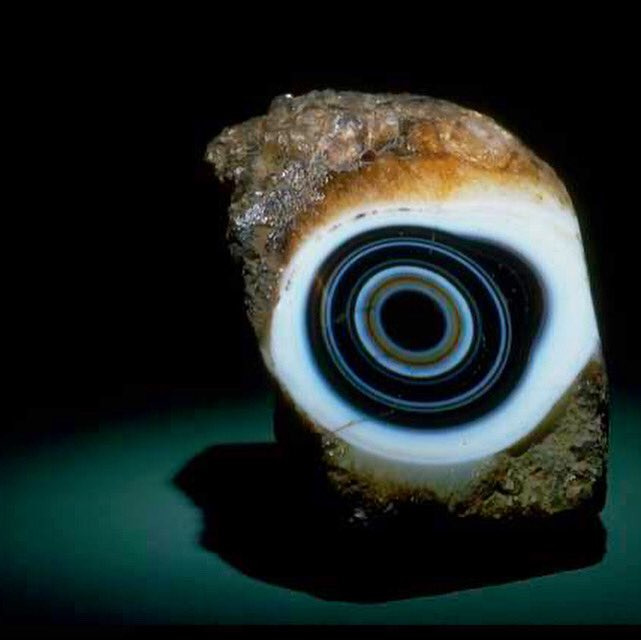
Language barriers cause even more difficulties. Thus, "fire agate" in English is not the same as the literal equivalent of "Flammenachat" in German.
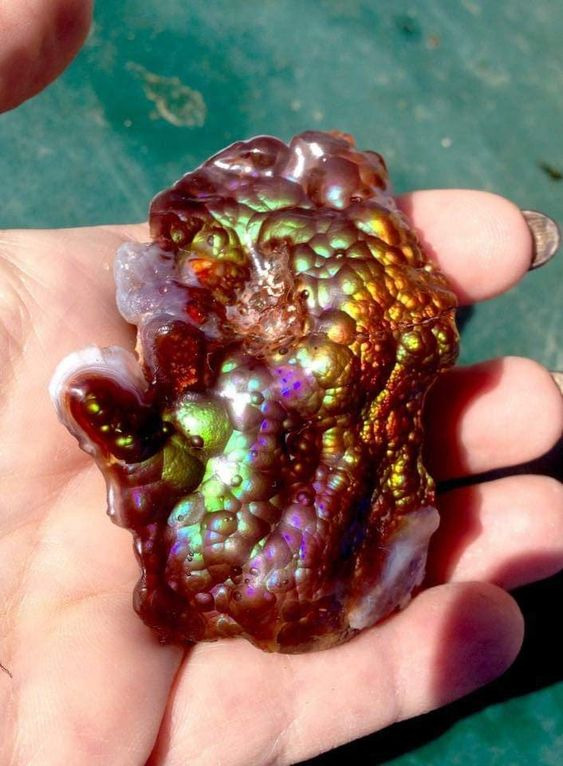
Most names of agates have no mineralogical significance.
Of the thousands of agate locations, dozens can be considered "classic", and, of course, it is impossible to cover them comprehensively. The "classic agate countries" are Argentina, Brazil, Germany, Mexico, Morocco, and the United States.
Jewelry with agates
Divinely beautiful, isn't it? All these natural inflorescences, intricacies of lines, not created by human logic, give the eyes some kind of divine respite and inspiration.
Look at these great examples:

